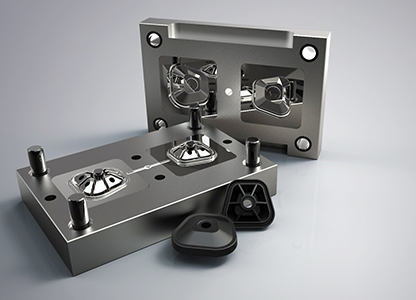How are Smart Materials Changing Industries?

Innovating Industries: The Rise of Smart Materials
In recent years, we have witnessed a remarkable growth in the field of smart materials. These materials, with their unique properties and ability to respond dynamically to environmental changes, are revolutionizing industries across the board. From aerospace to consumer electronics, smart materials like shape memory alloys, piezoelectric materials, and self-healing polymers are pushing the boundaries of innovation and inspiring a new wave of possibilities.
Shape Memory Alloys: Giving Objects a Memory
One of the most intriguing types of smart materials is shape memory alloys (SMAs). These alloys have the remarkable ability to remember their original shape and, when subjected to certain stimuli such as heat or a change in magnetic field, return to that shape. This property makes SMAs ideal for a wide range of applications.
In the aerospace industry, for example, SMAs are being used to develop wings that can change their shape in response to different flight conditions. This can greatly enhance fuel efficiency and improve aircraft performance. Additionally, SMAs are finding their way into consumer electronics, where they are being used to create flexible displays that can withstand bending and twisting without breaking.
Piezoelectric Materials: Harnessing the Power of Energy Conversion
Another exciting category of smart materials is piezoelectric materials. These materials have the ability to convert mechanical stress into an electrical charge and vice versa. This unique property opens up a world of possibilities for energy harvesting and sensor technologies.
In the automotive industry, piezoelectric materials are being used to develop energy-efficient tire pressure monitoring systems. The mechanical stress applied to the tires during rotation is converted into an electrical charge, which can be harnessed to power the monitoring system. This not only reduces the reliance on batteries but also contributes to a more sustainable and eco-friendly approach.
Self-Healing Polymers: Building Resilient Products
Self-healing polymers are yet another fascinating class of smart materials that are changing industries. These materials have the ability to repair themselves when damaged, leading to more durable and long-lasting products.
In the construction industry, self-healing polymers are used to develop resilient concrete that can repair its cracks and surface damage autonomously. This not only improves the lifespan of structures but also reduces maintenance costs and minimizes the environmental impact of repairs. In the world of consumer electronics, self-healing polymers are being incorporated into working surfaces and smartphone screens, ensuring that minor scratches and dings disappear over time, preserving the device's aesthetics.
The Future of Smart Materials
As we delve deeper into the realm of smart materials, the possibilities for innovation seem endless. From advancements in healthcare with the development of smart implants, to the creation of intelligent fabrics that adapt to changing weather conditions, smart materials are reshaping industries and opening doors to a more sustainable and efficient future.
However, it is crucial to remember that with great innovation comes the responsibility to address potential challenges and ensure the responsible use of these materials. Environmental considerations, ethical implications, and safety standards must be carefully considered as smart materials continue to evolve.
In conclusion, the rise of smart materials like shape memory alloys, piezoelectric materials, and self-healing polymers is revolutionizing industries globally. These materials, with their ability to respond dynamically to environmental changes, are pushing the boundaries of what we thought was possible. From aerospace to consumer electronics, the applications of smart materials are vast and diverse, offering new opportunities for innovation and sustainability. As we continue to explore and harness the potential of smart materials, we must do so with an eye towards the future, ensuring their responsible and ethical implementation.

Discover related Insights
Stay up to date with our latest articles.




